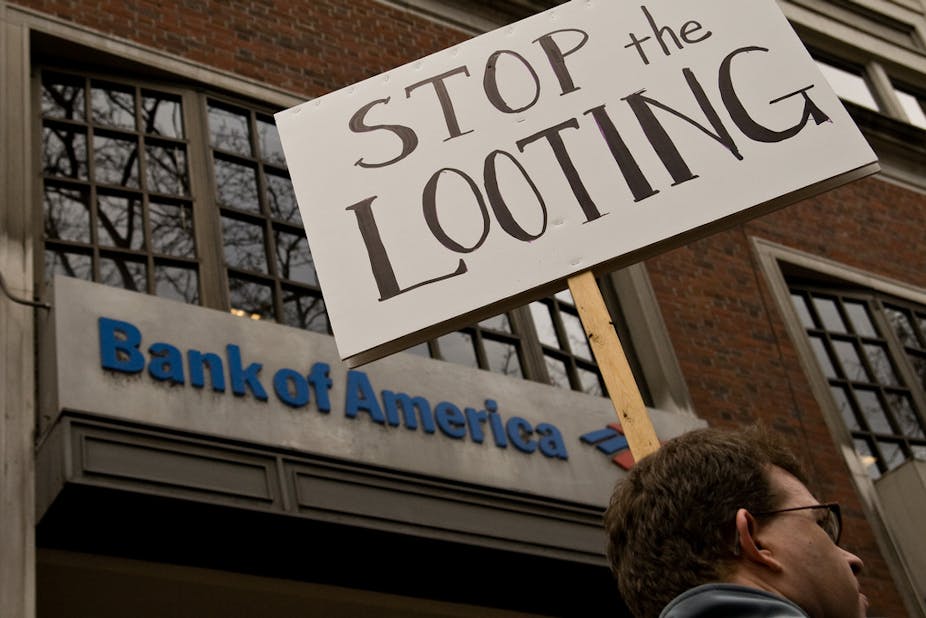In the last decade or so, the global financial landscape has endured two major shocks - the first with the 2007 collapse of the sub-prime mortgage market in the United States, and the second emanating out of Europe, with a major loss of confidence in the quality of debt issued by a number of European countries.
The full extent of the collapse in the mortgage backed securities market was not immediately clear, with the financial crisis peaking over a year later in the second half of 2008. The crisis was, of course, not limited to the US - a number of banks and building societies across Europe (notably in England, Ireland, the Netherlands, Spain and Iceland) also sought government assistance.
The European shock was both directly related to the GFC and the increased debt issued by European governments to bail-out their financial institutions, and indirectly via the economic slowdown observed in the US and Europe following the crisis.
The instrument of choice thus far: bail-outs
Central bankers have attempted to address the financial crisis by injecting liquidity into credit markets, including extending the types of securities accepted as collateral by central banks, and allowing a wider range of institutions to deal directly with central banks.
Governments, on the other hand, have proposed a number of rescue plans revolving around the partial nationalisation of financially stricken institutions, the provision of deposit guarantees, and the delivery of assistance packages to parts of the economy heavily affected by the ensuing economic downturn.
Bailouts include the US government’s rescue of Fannie Mae and Freddy Mac, the British government’s 2008 nationalisation of Northern Rock, and the provision of emergency loans to a number of European nations. During the last quarter of 2008 alone, governments (predominantly in the US and Europe) purchased about US$1.5 trillion of preference shares in distressed banks.
Government bailouts essentially involve using taxpayer funds to assist distressed institutions. This has typically been undertaken through the provision of financial assistance to the institution in return for an allocation of preference shares. Through this mechanism, taxpayers effectively become investors in a managed fund used to buy toxic or potentially toxic assets.
The rationale for this process is that it’s relatively straightforward for the government to support a shaky financial institution by providing it with funds in return for capital. A potentially lengthy and complex restructure of the institution’s debt and equity structure is avoided. This quick fix is, however, extremely costly - a disproportionately high level of risk is shifted away from bank creditors to taxpayers.
Bail-out or bail-in?
Research has suggested a number of potential problems associated with the government purchase of preferred stock in distressed banks.
Encouraging banks to participate in (fully or partially) voluntary rescue schemes typically requires governments to overpay for preferred stock. Even when governments overpay, however, there is no guarantee banks will increase their lending levels – something all too readily observed during the GFC. Indeed, the probability that banks will increase their lending following a preferred stock recapitalisation appears to be proportional to the extent that governments overpay for preferred stock.
There’s also the possibility of moral hazard, where larger banks are likely to accept greater risk on the basis of an implicit insurance policy formed by the understanding that they are “too big to fail”. Indeed, the issue of moral hazard is at the core of the bail-out or bail-in issue.
In a bail-in, recapitalisation is internal, and results in bondholders accepting a greater level of risk. This typically involves holders of subordinated debt (holders of lower-ranking, unsecured bonds) being forced to convert some of their bonds to equity.
The Financial Stability Board’s proposal to be put to the G20 summit participants in November requires the world’s largest banks to hold a certain amount of capital in the form of bonds that could become equity under certain conditions. Both the capital formula and the conversion trigger points, however, are still under debate.
This capital – defined as the Gone Concern Loss Capacity (or GLAC) – would act as a buffer during any banking crisis, forcing bondholders to accept a higher level of responsibility for their bank’s decisions.
Is this a positive move? It would seem to be. To some extent, bank bondholders have been earning excess returns while essentially holding government bonds. This lowers costs of capital for banks and creates an environment of cheap funding. The GFC is a prime example of the possible consequences stemming from these types of price distortions. Any increment in the cost of capital will, of course, be passed to consumers. This will be the immediately incurred cost of reducing the probability and magnitude of any future bail-out.
If the GLAC measures are implemented correctly, however, this will result in a shift in risk - and its associated costs - away from taxpayers and towards bank debtors and creditors. The accompanying repricing of bank bonds should encourage investors to better evaluate the lending practices of banks. Bondholders will require a greater return for lending to riskier banks, thereby increasing the cost of capital for those banks, and yielding a return for investors more commensurate with the true risks in the banking sector.

